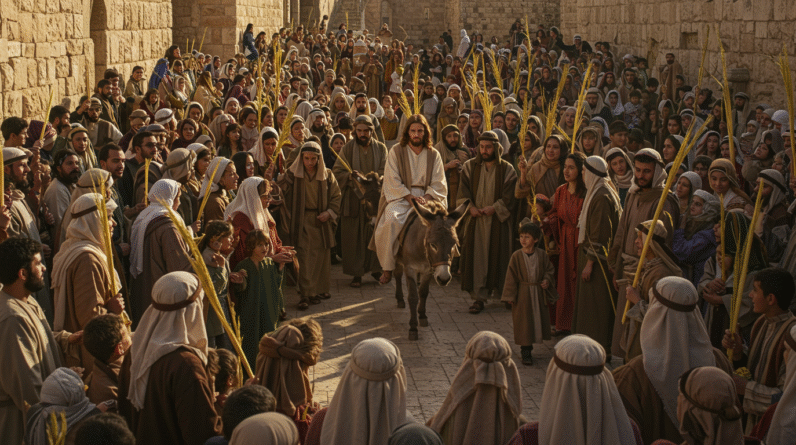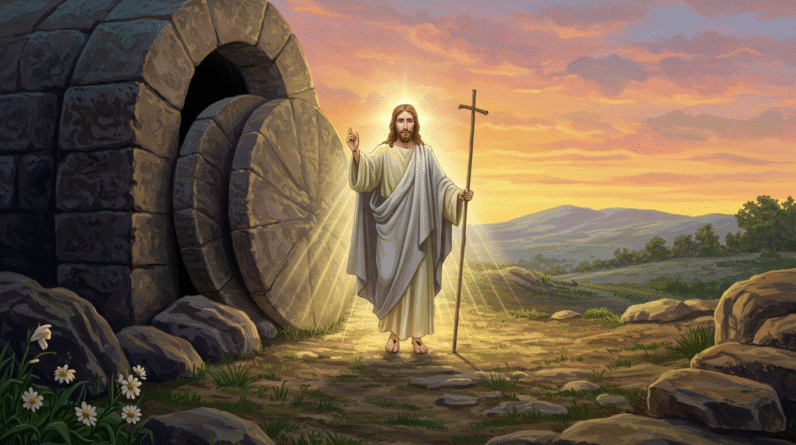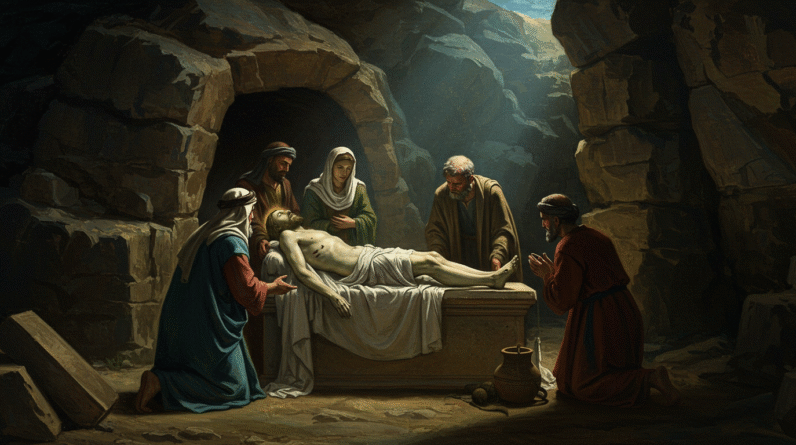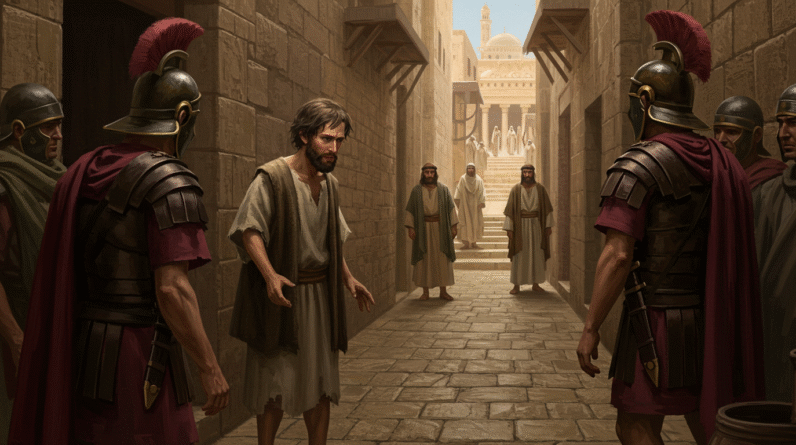Explore the profound meaning of Good Friday through Matthew 27. Dive into betrayal, sacrifice, and hope, unveiling humanity’s fragile resilience. #GoodFriday
✝️Good Friday (Crucifixion – Matthew 27)
Introduction
Hello there, friend. As we dive into the heart of Holy Week, our focus naturally drifts to Good Friday. It’s a day that carries exquisite weight and profound meaning in the Christian faith. But let’s be honest: Unearthing its full depth requires more than a cursory glance. It demands a deep inquiry into the events and emotions described intricately in the Gospel of Matthew, particularly chapter 27. This account doesn’t just record an event; it unveils the layers of betrayal, sacrifice, and profound love. It paints a portrait of resilience and redemption that, for Christians, speaks across time. Whether you’re reading this out of curiosity, spiritual reflection, or academic inquiry, I hope that you find a new perspective or emotional resonance within these words.
The Gist of Good Friday
Before diving into the text, let’s clarify what Good Friday signifies. It marks the day Jesus was crucified, embodying humanity’s paradox of sin through the unjust death of an innocent. It’s a historical and spiritual linchpin that transcends mere recounting to become a pivotal moment for believers. It’s not just a day of mourning; it’s a day enveloped in introspection and, for Christians, ultimate hope. Recognizing it is to recognize the depth of sacrifice made on behalf of humanity’s redemption.
Setting the Scene in Jerusalem
Good Friday doesn’t exist in isolation; it’s part of a vast tapestry that begins with the triumph of Palm Sunday. By the time we arrive at Friday, the mood has shifted dramatically. Jesus, once welcomed with shouts of joy, now faces a trial full of treachery and deception. The irony here—adulation turning to animosity—is palpable and sets the stage for the gravity of the events to follow. Jerusalem at this time was buzzing with activity and myriad emotions, a backdrop that amplifies the impending suffering and redemption.
A Closer Read: Matthew 27
Matthew 27:1-2
“As soon as morning came, all the chief priests and the elders of the people made their plans how to have Jesus executed. So they bound him, led him away and handed him over to Pilate the governor.”
Here, you can almost feel the tempo of urgency and foreboding. The religious leaders are adamant, coordinating strategies under the premise of law and order, yet they navigate treacherously through their conflicting interests. Pilate enters as a figure of authority, yet there’s something incredibly vulnerable in his position between power and truth.
Judas’ Regret: Matthew 27:3-5
“When Judas, who had betrayed him, saw that Jesus was condemned, he was seized with remorse and returned the thirty pieces of silver to the chief priests and the elders. ‘I have sinned,’ he said, ‘for I have betrayed innocent blood.’”
Judas’ remorse speaks volumes about the vibrancy of human nature. His betrayal, despite knowing its consequences, reflects the agonizing complexity of guilt and regret. It’s a visceral reminder that moral awareness doesn’t always coincide with ethical action. While the return of the money doesn’t amend his betrayal, it reveals a tortured soul caught in his web.
A Political Quagmire: Matthew 27:15-26
Amidst all of this, Pilate finds himself torn between his duty and doubt. The crowds, easily swayed, shout for Barabbas’ freedom over Jesus—a poignant symbol of choosing immediate gratification over lasting truth. Pilate’s act of washing his hands speaks of his inner conflict, but you sense its futility. It’s a striking image—an attempt to absolve oneself of responsibility when every decision tilts the scale of justice.

The Physicality of Crucifixion: Matthew 27:27-31
The scene shifts from a political courtroom to physical brutality. Soldiers mock Jesus, adorning him with a crown of thorns. It captures the essence of human cruelty intertwined with divine forebearance. The physical pain isn’t just about flesh and bone; it points to the mocking snicker of sin and its audacity to challenge divine goodness. This is more than punishment—it’s an exhibition meant to erode dignity, yet it only amplifies divine patience.
Witness to Agony: Matthew 27:32-44
Along the Via Dolorosa, you find Simon of Cyrene, a passerby who carries the cross. Here, his participation becomes an act of inadvertent divine appointment. As observers mock Jesus’ claim to divine sonship, we get a narrative tension—it’s a challenge to divine authority colliding with profound vulnerability.
Darkness Descends: Matthew 27:45-56
From noon until three in the afternoon, darkness envelops the land—a powerful visual of creation responding to its creator’s suffering. Jesus’s cry, “My God, my God, why have you forsaken me?” echoes Psalm 22’s lament. It highlights an intense moment of perceived abandonment, yet anticipation of redemption.
The Earthquake: Matthew 27:51-54
At Jesus’s last breath, the temple curtain tears in two—a symbolic and real event dissolving the old barriers between humanity and God. Earthquakes and opened graves articulate the shock and awe of this climactic moment. For the centurion and those with him, terror translates into new recognition—”Surely he is the Son of God!”
Silent Witnesses: Matthew 27:55-56
A motley crew of women stand faithful and steadfast. Since they supported Jesus on His Galilean ventures, their unswerving presence in His death adds a layer of deepening authenticity. Often marginalized in that era, they become the silent yet powerful witnesses to this pivotal event.
Reflecting on Good Friday’s Meaning
Good Friday implores us to dwell on seemingly paradoxical themes—betrayal and fidelity, justice and injustice, love and sacrifice. It’s a multi-faceted lens to examine both human frailty and divine grace. For Christians, it’s an invitation to reflect on a personal relationship with the sacrifice of Jesus, not as an isolated historical event but as a living spiritual reality.
Why Is It “Good”?
This lingering question of why it’s called “Good” reveals layers. Despite the horror and suffering, there’s an invitation to perceive through the eyes of hope delivered through Christ’s sacrificial act. Calling it “good” acknowledges ultimate victory over despair. It’s a day that beckons believers to a deeper contemplation of renewed life and reconciliation.
The Emotional Resonance
If you’ve ever felt betrayed or loved beyond measure, the narrative within Matthew 27 might resonate on a personal level. It’s a solemn reminder that even when times are unspeakably dark, there’s a glimmer of grace anchored in the hearts of believers. It forces us to wrestle with how personal narratives of struggle can find resonance in the shadows of the cross.
Conclusion
Dear reader, as we call to mind the poignant scenes of Good Friday, let it stir within you a sense of introspection and a desire to glean deeper understanding from its narrative. Whether you’re aligning it with your theology or viewing it through an academic lens, the weight of this moment beckons reflection.
As a ClickBank Affiliate, I earn from qualifying purchases.
Acknowledgment: All Bible verses referenced in this article were accessed via Bible Gateway (or Bible Hub).
“Want to explore more? Check out our latest post on Why Jesus? and discover the life-changing truth of the Gospel!”








